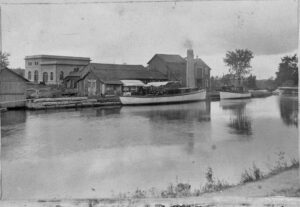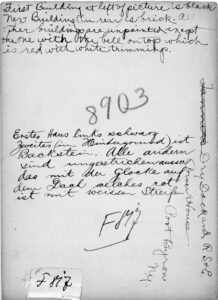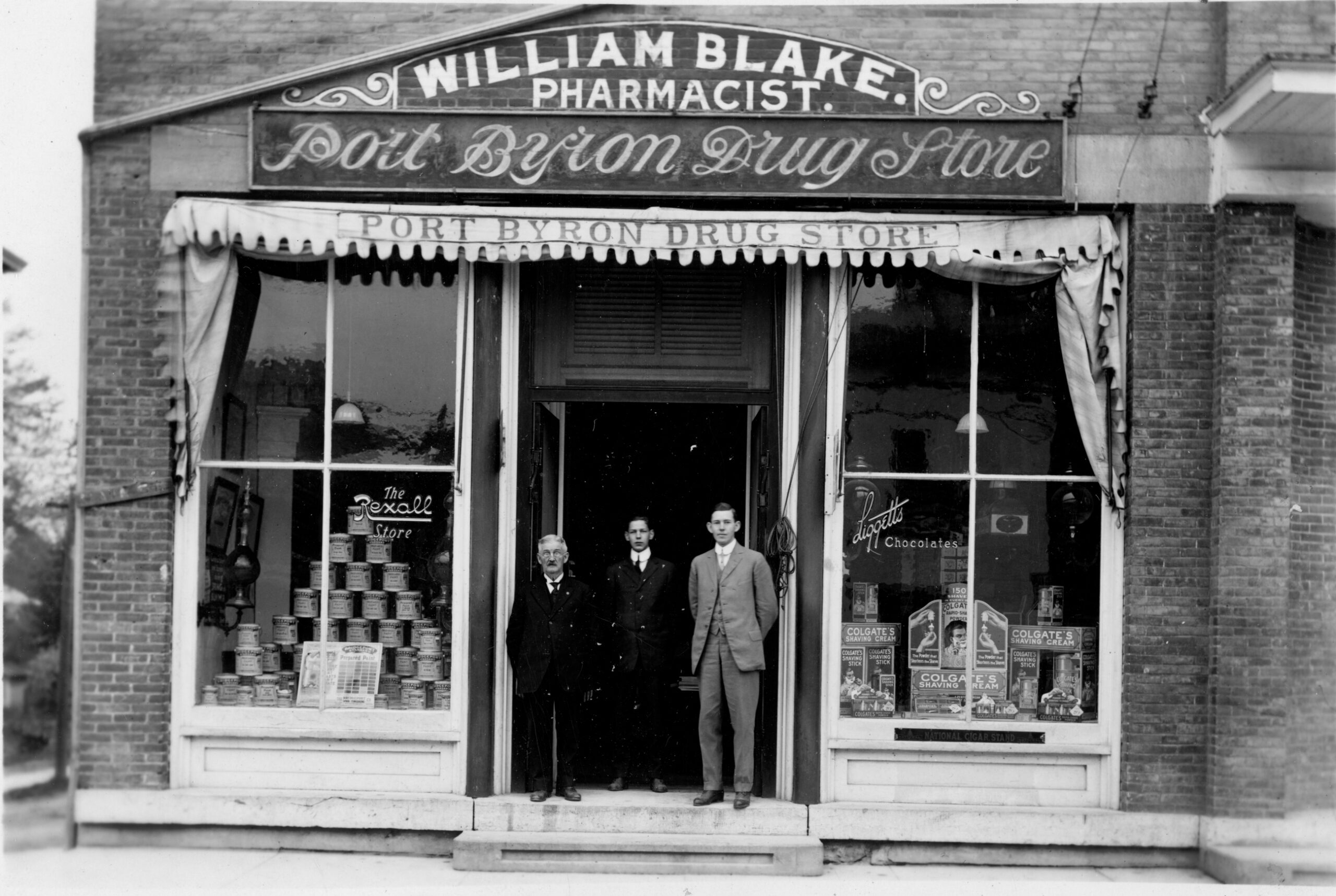Way back in 2019, I wrote about the Schasel postcard collection that had been donated to the Lock 52 Historical Society. It is a wonderful collection of over 100 postcards that had been collected by Rudy and his son Rene Schasel. That collection became the basis of our “Images of Port Byron” book. Now we have been surprised with a donation from the Blake family who donated a box of images that were used to create some of those postcards. These even offer an insight to how postcards were created.
First, a bit of background about the Blake family. William Blake was born in Junius and moved to Port Byron in October 1887 to open his drug store. This business would stay in the family, and in the village, through the death of his grandson Robert Blake in 1991. Blake’s Pharmacy was a well-loved business in the village that many folks still have fond memories about. One of the many items that the store sold was the postcard, and this new collection gives us some behind-the-scenes information about how they were created.
After their introduction in 1901, the postcard quickly became a collector’s item. With images from far away exotic places, or from just down the street, the postcard became an inexpensive way to share news, say hello, or share a memory. Even for a small village like Port Byron, hundreds of cards were produced so that you never had to send the same one twice. The hotels, churches, street scenes, the trolley and railroad, the canal, stores, scenes along the Outlet, and more, all became available. And if these were not enough, you could get locally produced cards that showed family groups, homes, or any subject that could be captured on camera. The only requirement was the size and format, 3.5 by 5 inches, with a image on the front and a place to address on the back.
We also need to recall that at about the same time that the postcard was introduced, the post office began to roll out its Rural Free Delivery (RFD) of the mail. (Maybe the postcard was a result of this change?) This service was rolled out over a few years. A notice in the Port Byron Chronicle told residents that their RFD mail would begin January 1, 1902. I was also amazed at the hours the post office was open. It was open for business between 7am to 8pm, Monday through Saturday, and noon to 2pm on Sundays. As Port Byron was so close to the main line of the New York Central, they could send and receive mail by the railroad eight times a day. And with the RFD delivering the mail right to your doorstep, the mails became accessible to everyone. A traveler could send home a postcard and his family would receive it quite quickly, sometimes the same day! Another interesting thing I found in researching this was the term, “postcard shower” where folks showered a recipient with postcards on a special day. The newspaper often reported that someone received a “postcard shower” on their birthday or special occasion. Of course Blake’s Drugstore sold postcard albums and collectors pages so you could keep all these postcards neat and tidy.
I am just passing this along as I found it interesting. Another interesting aside was that a lament of the RFD was the closing of the smaller post offices such as those at Throopsville and Fosterville. With the mails being delivered out of Auburn to their homes, it was noted that folks didn’t need to go to the post office anymore. In those days the smaller post offices were in stores where people would often gather and chat, so without the need to go get the mail, people stopped going to the store. The loss of this community contact was certainly felt by many in the rural areas.
Our new “Blake” collection has nice examples showing some of the process Mr. Blake went through to order his cards. A photographer would have driven about the village looking for subjects and then developed the film, likely in his wagon or in a mobile studio. With a print of the scene in hand, the photographer and purchaser could suggest crops, captions, or even disregard entirely.
This is the first time we have seen the process to colorize a postcard. As all the photography of the period was in black and white, some cards would be selected to be hand painted into color. On the back of the print, which was larger then a postcard and mounted to hardboard, the description of the scene was written out in English and German. This gave the crafts-person some idea as how to color the card. Once a painted master was ready, it was easy to machine print copies. German was necessary as most of this work was done in Germany. We also have a couple examples of a proof, where the card was printed and them sent back to Mr. Blake to be given a final check. I found it fascinating to see that Blake was ordering each card in quantities of 1000.



Each time one of these family collections are donated, our understanding of local history is enhanced and enriched. Your membership in the society helps us preserve and protect this history and allows us to share it with all of you.
